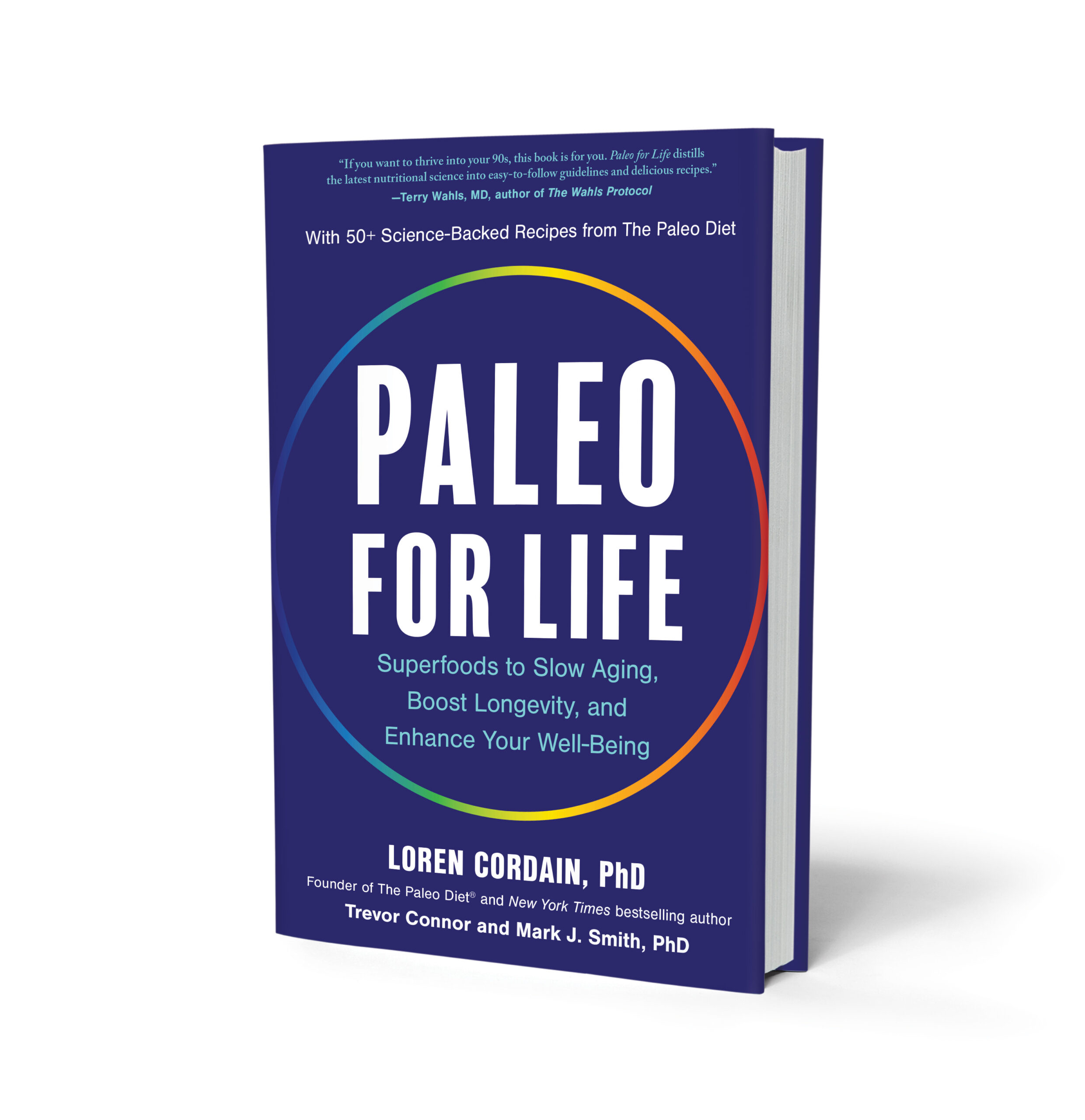Can the Paleo Diet Diminish Alzheimer’s Disease Risk?

According to Max Planck, the legendary, Nobel Prize winning physicist, “a new scientific truth does not triumph by convincing its opponents and making them see the light, but rather because its opponents eventually die, and a new generation grows up that is familiar with it.”[1]
Could Planck’s Principal apply to Alzheimer’s disease (AD) research and treatment? This would be remarkable, but certainly not unprecedented. Within the realms of nutrition and physiology, we’ve seen many instances of Planck’s Principal over the years. For example, despite evidence to the contrary, sugar was once thought to be benign. Similarly, saturated fat and dietary cholesterol were once seen as nutritional menaces, to be avoided or minimized at all costs. Evidence disproving these perspectives was around for decades, but only recently has it been embraced.
As we have seen, it takes more than just evidence for theories that challenge deeply entrenched ideas to gain acceptance – it also takes time.
So how does this relate to AD?
The Mainstream Theory
AD is characterized by gradual, yet progressive, memory loss and cognitive impairment. AD is the sixth leading cause of death in the US; patients typically live three to 10 years from the time their symptoms become noticeable.[2], [3]
One of the hallmarks of AD is the accumulation of “brain plaque.” The vast majority of AD patients exhibit molecular clumps of amyloid-β, a peptide fragment of amyloid precursor protein (APP).[4]
In 1991, Drs. John Hardy and David Allsop introduced the “amyloid cascade theory” of AD.[5] According to the theory, improperly metabolized APP initiates AD, thereafter triggering a linear cascade of events, including:
- Amyloid-β plaque build-up
- Inflammation
- Oxidative stress
- Deposition of neurofibrillary tangles (NFTs)
- Synoptic failure and neuronal loss
- More inflammation
- Cognitive decline and disability
Broadly speaking, there are two ways of testing the amyloid cascade theory:
1. Monitor the brains of animals or people with substantial amyloid deposits and determine if those deposits necessarily lead to AD. If the theory is correct, they should lead to AD.
2. Remove amyloid from the brains of those with AD. If the theory is correct, AD progression should slow down, stop, or reverse.
The Amyloid Cascade Theory: Problem 1
The first test, mentioned above, is a big problem for the amyloid cascade theory because people can accumulate substantial amyloid plaque deposits without ever developing AD or other forms of dementia. For example, according to neurologist Beau Ances of Washington University, autopsies reveal that 30% of brains without any dementia are nevertheless “chock-full” of amyloid plaque.[6]
PET imaging of mice brains has revealed the same phenomenon – brains with considerable amyloid deposits that never progress into dementia/AD.[7], [8] As summarized by world-renowned neurologist Dr. Karl Herrup, “these studies are all in substantial agreement with one another: individuals can present with few if any clinical symptoms of dementia and yet carry substantial amyloid burdens in their brain.”[9] This suggests, says Herrup, that amyloid deposits alone cannot be the cause of AD.
The Amyloid Cascade Theory: Problem 2
During the early 1990s, the neuroscience community quickly embraced the amyloid cascade theory. Since its introduction, AD research and treatment has focused primarily on drugs designed to reduce amyloid plaque. Between 2002 and 2012, 145 different amyloid-reducing drugs were tested in clinical trials. Whereas some of those drugs successfully reduced amyloid plaque, none succeeded in slowing the progression of AD.[10]
“The large number of major failed trials in Alzheimer’s is quite frightening,” says Lennart Mucke, director of the Gladstone Institute of Neurological Disease at UC San Francisco. “It has really scared off big pharma.”[11]
The pharmaceutical industry is currently at a crossroads. Should it abandon the amyloid cascade theory altogether, or stay the course? In February 2017, Merck abruptly halted a late-term trial for verubecestat, the company’s latest amyloid-reducing drug. They took this action after an external data monitoring committee concluded that the drug has “virtually no chance of finding a positive clinical effect.”[12]
Just three months earlier, Eli Lilly pulled the plug on solanezumab, another amyloid-reducing drug. Solanezumab fared little better than placebo in Lilly’s trial, which involved more than 2,100 people diagnosed with mild dementia due to Alzheimer’s disease.[13]
Biogen is currently testing aducanumab, yet another amyloid-reducing drug; phase III testing of which will extend through 2020 or longer.[14] Aducanumab could be the amyloid cascade theory’s last chance. Many researchers, however, want to retire the theory now. “We’re flogging a dead horse,” said Peter Davies, an Alzheimer’s researcher at the Feinstein Institute for Medical Research. “There’s no sign of anybody getting better, even for a short period, and that suggests to me that you have the wrong mechanism.”[15]
George Perry, a neuroscientist at the University of Texas at San Antonio, sums things up even more conclusively: “The amyloid hypothesis is dead. It’s a very simplistic hypothesis that was reasonable to propose 25 years ago. It is not a reasonable hypothesis any longer.”[16]
Deep Dogma
The amyloid cascade theory has dominated AD research, but why haven’t other theories seen the light of day? Dr. Zaven Khachaturian, the former coordinator of AD-related activities at the US National Institutes of Health, explains, “The amyloid hypothesis became such a strong scientific orthodoxy that it began to be accepted on the basis of faith rather than evidence. No one has stepped back to ask the fundamental question of whether our basic premise about the disease is the correct one.”[17]
In 2015, Dr. Herrup wrote a commentary for Nature Neuroscience called, “The case for rejecting the amyloid cascade hypothesis.” Herrup concluded, “with the passage of time, growing amounts of data have accumulated that are inconsistent with the basically linear structure of this hypothesis. And while there is fear in the field over the consequences of rejecting it outright, clinging to an inaccurate disease model is the option we should fear most.”[18]
The Pathogen Hypothesis
There’s no doubt that amyloid plaque is associated with AD, but is it the cause? Many researchers think not. Amyloid-β, they theorize, doesn’t cause AD. Rather, it is the consequence of an underlying condition – pathogenic infection – which itself is the cause or one of several causes.
In the March 2016 edition of the Journal of Alzheimer’s, a group of 33 AD researchers published an editorial calling upon the neuroscience community to give greater consideration to the growing body of evidence supporting the “pathogen hypothesis” of AD.[19] Briefly put, this hypothesis says AD has an infectious etiology, meaning an infection, or a combination of infections, triggers a cascade of events which eventually culminates in AD.
The available evidence shows, unequivocally, that AD is strongly associated with certain bacterial and viral infections. In 2015, for example, a team of Australian scientists conducted the first ever meta-analysis addressing the relationship between two types of bacteria – spirochetal and Chlamydophila pneumoniae (Cpn) – and AD. According to their analysis, spirochetal infection is associated with a ten-fold increase in AD occurrence, whereas Cpn infection is associated with a five-fold increase.[20]
Besides these bacteria, the herpes simplex 1 virus (HSV-1) is also strongly associated with AD. HSV-1 is a ubiquitous virus, infecting around two-thirds of the population 50 years or younger and as much as 80% of those 65 or older.[21],[22] The virus can’t usually gain access to the brain, but as we age, for reasons discussed below, brain access becomes increasingly feasible. In fact, studies have shown that a high percentage of elderly people – around 60% – exhibit latent HSV-1 DNA in their brains.[23],[24]
Dr. Ruth Itzhaki and her colleagues at the University of Manchester have been studying the relationship between HSV-1 and AD for the past two decades. According to their research, AD risk increases twelve-fold when the following two conditions are met:[25], [26]
- HSV-1 is present in the brain.
- The patient has a particular genetic variant – APOE4 – which is independently strongly associated with AD.
Infections are associated with AD, but researchers have thus far been unable to demonstrate causation. It’s possible, for example, that those who have AD are more susceptible to infection and thus acquire these infections after AD has already started progressing. Nevertheless, as we’ll see below, some studies show that infection can come first, thereby triggering the disease process.
Normally we think about infections as causing acute sickness. For example, you become infected with a virus and shortly thereafter you experience a sore throat, a runny nose, sneezing, and other symptoms; after about one week, you’re back to normal. Some pathogens, however, are latent, meaning after the initial infection – sometimes many years later – the pathogen emerges from a dormant state, thus causing chronic, long-term damage. Herpes simplex 1 virus (HSV-1) and Chlamydophila pneumoniae are the top two pathogens associated with AD and both of have latent properties.[27], [28]
The Infection-Amyloid Connection
So, if infection and amyloid plaque are both associated with AD, what’s the relationship between them? In 2002, a pair of Australian neurologists, Drs. Stephen Robinson and Glenda Bishop, issued a strong challenge to the amyloid cascade theory. According to their research, the brain might intentionally produce amyloid-β in order to protect itself when infections arise.[29]
It wasn’t until 2016, however, that neurologist Robert Moir and his colleagues demonstrated this conclusively. Just hours after injecting salmonella into the brains of mice, they witnessed the development of amyloid plaque at the injection sites.[30] So what does it mean? Does it mean that amyloid plaque is good or bad? The evidence seems to suggest both. Amyloid plaque protects the brain against infections, but after killing an infection, the plaque remains. When enough plaque accumulates, a cascade of inflammation and other harmful developments ensues.
How Do Pathogens Access the Brain?
If the pathogen hypothesis is correct, pathogens must be able to enter the brain. This could be done in various ways. HSV-1, for example, can infect the cornea and travel to the brain via the trigeminal nerve.[31] The most obvious route to the brain, however, is via the blood brain barrier (BBB). Nevertheless, the BBB is extremely effective at preventing pathogens from entering the brain. So how can they possibly enter?
Some pathogens have developed clever strategies and techniques for bypassing the BBB. According to Dr. Kwang Sik Kim, the Director of Pediatric Infectious Diseases at John Hopkins Children’s Center, “Pathogens can cross the blood–brain barrier transcellularly, paracellularly and/or in infected phagocytes (the so-called Trojan-horse mechanism).”[32]
Patience, it turns out, may be a pathogen’s most effective strategy. As we age, the BBB becomes more permeable, thus making brain access easier. In January 2015, researchers from the University of Southern California, led by Dr. Berislav Zlokovic, pioneered the use of a dynamic contrast-enhanced MRI to measure BBB permeability.
Whereas previously, researchers could only observe BBB damage via postmortem tissue analyses, Zlokovic et al. demonstrated age-dependent BBB breakdown in living subjects. Specifically, they found that aging makes us more prone to leaks within the hippocampus, the area of the brain involved with memory and learning.[33] Other researchers have also shown hippocampus damage to be a critical event in the development of AD.[34]
Conclusions and Prevention Strategies
It’s possible that countless dollars and many years have been wasted chasing an AD cure based on an incorrect understand of AD etiology. Unfortunately, the neuroscience community embraced the amyloid cascade theory for decades while consistently disregarding or outright rejecting competing theories.
The upcoming years will be extremely telling with respect to understanding AD and developing more effective treatment and prevention strategies. Age is the strongest risk factor for AD, but can we take proactive steps to minimize our risk? In other words, is AD also a lifestyle disease, or at least one whose risk can be curbed through healthy living? If the pathogen hypothesis is correct, then adopting a diet and lifestyle that nurtures and strengthens the immune system might indeed decrease one’s AD risk later in life.
It’s also worth noting that type-2 diabetes and obesity are both significant risk factors for AD.[35], [36] Being obese in mid-life, for example, increases one’s risk for AD by 80 percent.[37]
Moreover, some researchers are now referring to AD as “type-3 diabetes,” based on increasing evidence suggesting that AD is a brain-specific form of diabetes, characterized by insulin resistance within the brain.[38], [39], [40]
Does lifestyle influence AD risk? Dr. Jeff Cummings, Director of the Cleveland Clinic’s Lou Ruvo Center for Brain Health, sums it up nicely, “Roughly half of the risk for Alzheimer’s disease is linked to things we can’t control, like age and genetics, but the other half are things that are at least partially in our control – you can reduce your risk with lifestyle modification.”[41] The Paleo Diet, because it reduces type-2 diabetes and obesity risks while strengthening the immune system, is a great way to start.
References
[1] Hull DL, Tessner PD, Diamond AM. Planck’s Principle. Science [Internet]. 1978 Nov 17 [cited 2020 Oct 5];202(4369):717–23. Available from: https://science.sciencemag.org/content/202/4369/717/tab-pdf
[2] Centers for Disease Control and Prevention. Leading Causes of Death.
[3] Zanetti O, Solerte SB, Cantoni F. Life expectancy in Alzheimer’s disease (AD). Archives of gerontology and geriatrics [Internet]. 2009;49 Suppl 1:237–43. Available from: https://www.ncbi.nlm.nih.gov/pubmed/19836639
[4] Ossenkoppele R, Jansen WJ, Rabinovici GD, Knol DL, van der Flier WM, van Berckel BNM, et al. Prevalence of Amyloid PET Positivity in Dementia Syndromes. JAMA. 2015 May 19;313(19):1939.
[5] Hardy J, Allsop D. Amyloid deposition as the central event in the aetiology of Alzheimer’s disease. Trends in Pharmacological Sciences. 1991 Jan;12:383–8.
[6] Underwood E. Tau protein—not amyloid—may be key driver of Alzheimer’s symptoms. Science [Internet]. 2016 May 11; Available from: https://www.science.org/content/article/tau-protein-not-amyloid-may-be-key-driver-alzheimer-s-symptoms
[7] Mathis CA, Bacskai BJ, Kajdasz ST, McLellan ME, Frosch MP, Hyman BT, et al. A lipophilic thioflavin-T derivative for positron emission tomography (PET) imaging of amyloid in brain. Bioorganic & Medicinal Chemistry Letters. 2002 Feb;12(3):295–8.
[8] Zhang W, Kung MP, Oya S, Hou C, Kung HF. 18F-labeled styrylpyridines as PET agents for amyloid plaque imaging. Nuclear Medicine and Biology. 2007 Jan;34(1):89–97.
[9] Herrup K. The case for rejecting the amyloid cascade hypothesis. Nature Neuroscience [Internet]. 2015 May 26;18(6):794–9. Available from: https://www.nature.com/articles/nn.4017
[10] Cummings JL, Morstorf T, Zhong K. Alzheimer’s disease drug-development pipeline: few candidates, frequent failures. Alzheimer’s Research & Therapy. 2014;6(4):37.
[11] Spinney L. Alzheimer’s disease: The forgetting gene. Nature News [Internet]. 2014 Jun 5 [cited 2020 Sep 6];510(7503):26. Available from: https://www.nature.com/news/alzheimer-s-disease-the-forgetting-gene-1.15342
[12] Coghlan A. Key Alzheimer’s drug shows “virtually no chance of working” [Internet]. New Scientist. [cited 2020 Mar 17]. Available from: https://www.newscientist.com/article/2121497-key-alzheimers-drug-shows-virtually-no-chance-of-working/
[13] Abbott A, Dolgin E. Leading Alzheimer’s theory survives drug failure. Nature. 2016 Nov 23;540(7631):15–6.
[14] Check Hayden E. Alzheimer’s treatment appears to alleviate memory loss in small trial. Nature. 2016 Aug 31;
[15] Abbott A, Dolgin E. Leading Alzheimer’s theory survives drug failure. Nature. 2016 Nov 23;540(7631):15–6.
[16] Abbott A, Dolgin E. Leading Alzheimer’s theory survives drug failure. Nature. 2016 Nov 23;540(7631):15–6.
[17] Spinney L. Alzheimer’s disease: The forgetting gene. Nature News [Internet]. 2014 Jun 5 [cited 2020 Sep 6];510(7503):26. Available from: https://www.nature.com/news/alzheimer-s-disease-the-forgetting-gene-1.15342
[18] Herrup K. The case for rejecting the amyloid cascade hypothesis. Nature Neuroscience [Internet]. 2015 May 26;18(6):794–9. Available from: https://www.nature.com/articles/nn.4017
[19] Itzhaki RF, Lathe R, Balin BJ, Ball MJ, Bearer EL, Braak H, et al. Microbes and Alzheimer’s Disease. Journal of Alzheimer’s Disease. 2016 Apr 12;51(4):979–84.
[20] Maheshwari P, Eslick GD. Bacterial Infection and Alzheimer’s Disease: A Meta-Analysis. Journal of Alzheimer’s Disease. 2014 Dec 2;43(3):957–66.
[21] Globally, an estimated two-thirds of the population under 50 are infected with herpes simplex virus type 1 [Internet]. www.who.int. [cited 2020 Jun 15]. Available from: https://www.who.int/en/news-room/detail/28-10-2015-globally-an-estimated-two-thirds-of-the-population-under-50-are-infected-with-herpes-simplex-virus-type-1
[22] Piacentini R, De Chiara G, Li Puma DD, Ripoli C, Marcocci ME, Garaci E, et al. HSV-1 and Alzheimerâ€TMs disease: more than a hypothesis. Frontiers in Pharmacology. 2014 May 7;5.
[23] Jamieson GA, Maitland NJ, Wilcock GK, Yates CM, Itzhaki RF. Herpes simplex virus type 1 DNA is present in specific regions of brain from aged people with and without senile dementia of the Alzheimer type. The Journal of Pathology [Internet]. 1992 Aug 1 [cited 2023 Aug 9];167(4):365–8. Available from: https://pubmed.ncbi.nlm.nih.gov/1328575/
[24] Itzhaki RF, et al. (Jan 1997). Herpes simplex virus type 1 in brain and risk of Alzheimer’s disease.
[25] Itzhaki RF. Herpes simplex virus type 1 and Alzheimer’s disease: increasing evidence for a major role of the virus. Frontiers in aging neuroscience [Internet]. 2014;6:202. Available from: https://www.ncbi.nlm.nih.gov/pmc/articles/PMC4128394/
[26] Liu CC, Kanekiyo T, Xu H, Bu G. Apolipoprotein E and Alzheimer disease: risk, Mechanisms and Therapy. Nature Reviews Neurology [Internet]. 2013 Jan 8;9(2):106–18. Available from: https://www.ncbi.nlm.nih.gov/pmc/articles/PMC3726719/
[27] Itzhaki RF. Herpes simplex virus type 1 and Alzheimer’s disease: increasing evidence for a major role of the virus. Frontiers in aging neuroscience [Internet]. 2014;6:202. Available from: https://www.ncbi.nlm.nih.gov/pmc/articles/PMC4128394/).
[28] De Chiara G, Marcocci ME, Sgarbanti R, Civitelli L, Ripoli C, Piacentini R, et al. Infectious Agents and Neurodegeneration. Molecular Neurobiology. 2012 Aug 17;46(3):614–38.
[29] Bishop GM, Robinson SR. The amyloid hypothesis: let sleeping dogmas lie? Neurobiology of Aging. 2002 Nov;23(6):1101–5.
[30] Kumar DKV, Choi SH, Washicosky KJ, Eimer WA, Tucker S, Ghofrani J, et al. Amyloid-β peptide protects against microbial infection in mouse and worm models of Alzheimer’s disease. Science Translational Medicine [Internet]. 2016 May 25 [cited 2019 Aug 18];8(340):340ra72–2. Available from: https://www.ncbi.nlm.nih.gov/pmc/articles/PMC5505565/.
[31] Shimeld C, Whiteland JL, Nicholls SM, Grinfeld E, Easty DL, Gao H, et al. Immune cell infiltration and persistence in the mouse trigeminal ganglion after infection of the cornea with herpes simplex virus type 1. Journal of Neuroimmunology [Internet]. 1995 Aug 1 [cited 2023 Aug 9];61(1):7–16. Available from: https://pubmed.ncbi.nlm.nih.gov/7560014/
[32] Kim KS. Mechanisms of microbial traversal of the blood–brain barrier. Nature Reviews Microbiology [Internet]. 2008 Jul 7 [cited 2019 Apr 27];6(8):625–34. Available from: https://www.nature.com/articles/nrmicro1952).
[33] Montagne A, Barnes Samuel R, Sweeney Melanie D, Halliday Matthew R, Sagare Abhay P, Zhao Z, et al. Blood-Brain Barrier Breakdown in the Aging Human Hippocampus. Neuron [Internet]. 2015 Jan;85(2):296–302. Available from: https://www.sciencedirect.com/science/article/pii/S0896627314011416
[34] Mu Y, Gage FH. Adult hippocampal neurogenesis and its role in Alzheimer’s disease. Molecular Neurodegeneration [Internet]. 2011;6(1):85. Available from: https://molecularneurodegeneration.biomedcentral.com/articles/10.1186/1750-1326-6-85
[35] Sridhar GR. Emerging links between type 2 diabetes and Alzheimer’s disease. World Journal of Diabetes. 2015;6(5):744.
[36] Lee EB. Obesity, leptin, and Alzheimer’s disease. Annals of the New York Academy of Sciences. 2011 Dec;1243(1):15–29.
[37] Beydoun MA, Beydoun HA, Wang Y. Obesity and central obesity as risk factors for incident dementia and its subtypes: a systematic review and meta-analysis. Obesity Reviews. 2008 May;9(3):204–18.
[38] Alzheimer’s & Dementia [Internet]. Alzheimer’s Association. Available from: https://alz-journals.onlinelibrary.wiley.com/journal/15525279
[39] de la Monte SM, Wands JR. Alzheimer’s Disease is Type 3 Diabetes—Evidence Reviewed. Journal of Diabetes Science and Technology [Internet]. 2008 Nov;2(6):1101–13. Available from: https://www.ncbi.nlm.nih.gov/pmc/articles/PMC2769828/
[40] Akter K, Lanza EA, Martin SA, Myronyuk N, Rua M, Raffa RB. Diabetes mellitus and Alzheimer’s disease: shared pathology and treatment? British Journal of Clinical Pharmacology [Internet]. 2011 Feb 1 [cited 2019 Jun 22];71(3):365–76. Available from: https://www.ncbi.nlm.nih.gov/pmc/articles/PMC3045545/
[41] News Wire Team. (Oct 15, 2013). Obesity: A Risk Factor for Alzheimer’s. The Cleveland Clinic.
Christopher Clark
Christopher Clark is an entrepreneur, food writer, and business owner with years of experience with nutrition.
More About The Author





